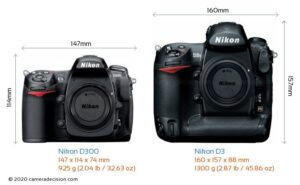


I recently got a mail from a friend who wanted my thoughts on switching systems because of his problems ( in specific cases) with AF on the D300. Well here goes.
Equipment doesn’t matter for most parts but, for the last 10-15% “edge” I guess it does. What matters even more inside that 10-15% is, to know throughly the capabilities and limitations of that system, so you know how to work around those and still, get what you intend.
Q1. Nikon VR Vs Canon IS
Ans: Ive not had problems with the VR on Nikon. Besides I do like that the image is stabilised visually in the viewfinder, as in the Nikon system. The Canon IS is supposed to be good as well but, I have no personal experience of it. But, the fact is that the IS on the Canon 600mm is a now been there for more than a few years and by that yardstick, the Nikon VR on the 600mm is more recent.
Q2. Slow AF on the D300.
Ans: On the D300, the lens you use will matter as well. Besides I have read reports of issues when used with the TC. You mention a Sigma 500mm. F4.5. With the TC added it could be that the AF response slows due to lesser light now available for computing. The 105VR is also probably not the best to compare. I think you will see a marked difference (improvement) with a Nikon lens, say a Nikon 300mm F4 or 300mm 2.8 or the 500/600mm VR.
Q3. Some AF tips on the new CAM3500
Ans: Both Nikon and Canons have their own quirks as regards AF. So far I have not been limited by the Nikon AF system. Here is what I know about the new AF module.
Basically a tad slower to acquire but, much much better tracking and maintaining AF.
Ok what I do, is use manual focus a lot and,a lot of manual pre focus as well. This results in the lens motor moving lesser hence, faster acquisition. Knowing how to use the subject contrast on vertical / cross type AF sensor is also needed in the new system. Subject contrast horizontal, then use vertical AF sensor. Subject contrast vertical , use horizontal AF sensor. you need to know which AF point is of which type. For good AF acquisition, the subject should be adequate size for the AF to grab and have sufficient contrast as well.
For the new AF module, use 9 points, non 3D, and AF-C, Release Priority, Dynamic area, AF Lock set to OFF. Don’t pump the AF ON button after you have acquired the subject while tracking.
Please read these threads.
http://forums.dpreview.com/
Specific AF settings here
http://forums.dpreview.com/
http://www.birdphotographers.net/forums/showthread.php?t=20857
Q4. AF difference between the D300 & the D3
Ans: D3 has faster AF ( due to more computing horsepower in the D3 hardware) and you already know the AF points are bunched closer & its Full Frame. I am tending towards the D3 than the D300 only because I tend to favour better AF to pure pixel density.
Basically there is no one solution at the moment. The best AF in the Nikon range is the D3. The best Pixel density is, the D300. If you can manage it, get the D3 and the 600VR. If you can hire a D3 and try it as well. You will only know about the new manufacturer system and its intricacies once you begin to use it, not that there wont be any, just that they are different. Here you already know about them perhaps mostly have solved them already to some level.
As for me, I am staying with the pro body from Nikon. I do prefer the Nikon pro body ergonomics very much and can do most things without taking my eye off the camera. Hence, I am staying with the D2X (for pixel density) and also might get a D3 (for low light) shortly. Once you have a long lens you do need two bodies, one for the long lens and one for the short lens. But, if what you shoot is landscapes or anything that does not need a super quick AF response, stick with the D300.
You should have a D3X announced sometime March next year I guess. For the FF vs 1.5x crop, one can use “foot zoom” for some parts.
Leave a Reply
You must be logged in to post a comment.